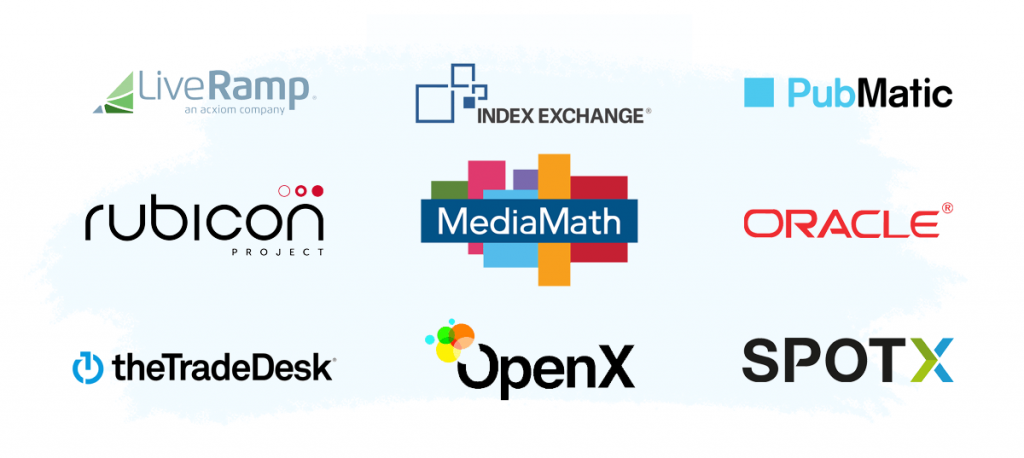Everyone who works in online advertising – from advertisers and agency folks to developers and publishers – has no doubt heard the concept of a walled garden. The term gets tossed around in AdTech and MarTech quite a bit, but its roots reach far beyond online advertising.
We like to think the internet is an open and free space where everyone is equal and no one is restricted in any way – at least that’s how many envisioned it. A closer look at online advertising, however, will quickly dispel those thoughts; some of the most successful online businesses are the ones that grew by properly leveraging the concept of a walled garden.
In this article, we will track the origins of walled gardens and discuss what the term means in the context of advertising technology (AdTech).
The Origins of Walled Gardens
The term walled garden was coined by John Malone, the founder of Tele-Communications Inc., a company later acquired by AT&T. The term was then used in various contexts, but universally denoted a closed platform.
Pioneering US telecoms companies were early examples of walled gardens.
Bell System was the first telephone operator that tried to make its hardware exclusive to the phones its customers were using. The phones themselves were leased from the company, rather than owned by the end user.
On top of that, Bell System was essentially wielding control over the conversations users had on its infrastructure. This led to a rather ridiculous case known as Hush-A-Phone Corp. v. United States. Hush-A-Phone Corporation sold small devices reducing the risk of customers’ conversations being overheard by Bell.
AT&T (which later owned Bell Systems) made it difficult for customers to connect their own phones to the network, and considered such devices “foreign attachments” subject to control. Luckily, things have significantly changed since then – at least in telecoms.
The term walled garden also lingered through early internet service providers (ISPs), which (like Bell, following partnerships with providers of online services) created walled-garden environments for their clients and restricted access to other external services.
ISPs like Comcast and AT&T notoriously shipped their hardware, e.g. modems, with a walledgarden.cfg file that essentially restricted users from accessing certain resources.
Which Companies Are the Walled Gardens of Advertising Technology (AdTech)?
As walled gardens are considered relics of the past in many industries, they still dominate the AdTech landscape. The two main powerhouses are Google and Facebook (aka “the duopoly”).

What these companies are doing are prime examples of walled-garden strategies, strengthening their dominance and decreasing the number of viable alternatives.
Google and Facebook are predicted to jointly boast a 61% global market share in 2019, up from 56% in 2018. This number is suspected to be higher in Europe, where the duopoly holds an approximate 80% market share of digital advertising.
At the same time, online advertising spend outside the duopoly is predicted to fall by 7.2% globally.
Facebook, for example, creates a very convenient environment for marketers; it offers access to vast collections of data and centralized audience management. Information on social media is regularly updated and highly accurate, providing marketers with easy access to their target audiences.
The following strengthens the positions of Google and Facebook:
- Both companies have a treasure trove of consumer data. Google has over 1.5 billion active monthly Gmail users and Facebook has 2.38 billion monthly users.
- Users sign in to their Google and Facebook accounts on different devices (e.g. laptops and smartphones), meaning the duopoly has access to deterministic data that enables them to target users across devices and conduct accurate attribution. This type of cross-device targeting and attribution is challenging for independent AdTech vendors.
- Google’s web browser (Chrome) and its Android mobile operating system gives the company even more control.
Google and Facebook clearly aim to increase their stronghold by catering to advertisers’ needs in every area of online advertising, reducing their reliance on third-party providers and further increasing their hold of the market:
Facebook Watch is the social network’s attempt to get a slice of the streaming-video cake and some advertising revenue along with it. Facebook Showcase is a program enabling premium video advertisers to buy ad spots on the Facebook Watch service. The platform utilizes the upfront selling cycle model.
Facebook operates its in-house Creative Shop, a division that works with brands across its portfolio, which also includes Instagram, Messenger and Oculus.
Google Zoo is the company’s creative think tank that assists brands in leveraging YouTube and other Google tech.
Apart from Google and Facebook, there are really only two other companies that are considered walled gardens within AdTech: Amazon and Apple.
In fact, you’ll often seen the abbreviation “GAFA” (or “FAGA”) used, which stands for Google, Amazon, Facebook and Apple.
Could the Duopoly of Google and Facebook Add a Third Player?
Over the years, there has been a lot of talk about the possibility of a third player emerging and turning the duopoly into an oligopoly.
While many tech companies, such as Twitter and Pinterest, have been considered for the third role, the only companies that have the scale in terms of users, data, and market control would be Amazon and Apple.

Amazon is in a strong position to join the ranks of Google and Facebook.
The company launched its advertising division in an attempt to monetize its rich and plentiful consumer and purchasing data.
Amazon Advertising reported $10.1 billion in revenue for 2018, which was up 95% year-over-year. By contrast, its online-store sales grew only 14% and Amazon Web Services sales grew 46% year-over-year.
Apart from the mountains of data in its system, Amazon has something that Google and Facebook don’t – purchase data.
Google and Facebook know what online users search for and click on (with some purchasing data thrown in), but Amazon owns the game when it comes to knowing what people buy, who they buy it from, and how often. This alone makes the company a very attractive option for retailers.
It is estimated that Google may lose some market share to Amazon and other retail websites over the next few years.
A recent Forrester report estimated that digital advertising spend will grow by 55% by 2023. “The shift gives Amazon a reason to strengthen its search features – text and voice – for organic traffic, as well as its search-advertising platform.”

While Apple doesn’t have any advertising products like the aforementioned companies, it does have control and a large market share over a number of industries, including:
- Devices: Mac, iPhone, iPad, Apple Watch, Apple TV
- Operating systems: macOS, iOS, watchOS, tvOS
- Web browser: Safari
- Apps, services and marketplaces: Apple Music, iTunes, Apple Store
Apple’s dominance in these markets puts the company in a strong position if it were to emerge as a competitor to Google and Facebook in the AdTech space. It’s highly unlikely that it would, however, and even if it did, it’s also unlikely that Apple would experience the same growth as Google, Facebook or Amazon.
The reason for this boils down to two things:
- User experience
- Privacy
Apple is renowned for delivering a clean and crisp user experience, as well as its recent focus on privacy, both via the introduction of Intelligent Tracking Prevention (ITP) on Safari browsers and its marketing.
https://www.youtube.com/watch?v=A_6uV9A12ok
Apple’s latest marketing message is all about privacy.
Although Apple previously dipped its toes into AdTech waters with iAd, which was shelved in 2016, and ran search ads in the Apple Store, it wouldn’t be able to present an attractive offer to advertisers without collecting user data or somehow disrupting the user experience.
Walled Gardens vs. Independent AdTech
Companies on the outside of walled gardens are known as independent AdTech companies.
These companies offer a wide range of advertising-technology platforms for buyers and sellers of online media, such as:
- Demand-side platforms (DSPs)
- Supply-side platforms (SSPs)
- Ad exchanges
- Ad servers
- Ad networks
- Data-management platforms (DMPs)
- …Many others
Some of the main independent AdTech companies include:

- While they lack the scale and control that GAFA has, these companies still provide a number of advantages to their clients (brands, advertisers, agencies and publishers):
Customization: Many AdTech vendors have open application programming interfaces (APIs), which allow their clients and other AdTech companies to build new tools on top of their platforms.
Read our previous posts to learn more about building new tools on top of APIs.
Transparency: The topic of transparency (or rather a lack thereof) is one that’s been around for a number of years. When discussed in terms of walled gardens, it refers to a lack of transparency into measurement and reporting. Google and Facebook are essentially grading their own homework.
This is not the case for many independent AdTech vendors that allow third-party companies to measure and verify ad campaigns. However, there’s still quite a lot of opacity around fees and charges (aka the AdTech tax).
Data ownership: Many independent AdTech companies allow their clients to import their own data (typically first-party data) into their platforms to power ad targeting. Some vendors don’t mix this with data from other clients, while some do.
The walled gardens not only provide little insight into their own data, but they also collect marketers’ data and use it for their own purposes.
Custom support: One of the most overlooked advantages of using an independent AdTech platform is the quality of customer service available to advertisers, agencies and publishers. The customer service offered by most AdTech vendors is going to be more meaningful and direct than what Google and Facebook can offer, unless you’re a large client.
What Can Independent AdTech Do to Compete With Walled Gardens?
Walled gardens are modern-day monopolies – hard to break and ruling the industry. The convenience and scale they offer marketers is hard to beat.
But it’s not impossible for independent AdTech companies to offer viable alternatives.
Below are just a few things independent AdTech vendors can do to compete with the walled gardens:
Join forces: There’s a real opportunity for independent AdTech companies to collectively work together and create solutions that offer a competitive advantage over Google and Facebook.
We’ve already seen signs of this with the introduction of various ID solutions, but more needs to be done to address other areas of online advertising, such as cross-device targeting, measurement and attribution.
We’ve written about unified ID initiatives in one of our previous posts.
Another example is OpenAP, a cooperative, advanced advertising platform that has already signed on more than 800 media agencies, including media giants Viacom, Fox, and Turner.
However, we’ve already seen some friction between vendors regarding the adoption of the ID solutions, so complete and full cooperation seems more like a pipe dream than a reality.
Provide what the walled gardens don’t: Offer clients things that walled gardens don’t, such as data ownership and portability, as well as customization and transparency.
Key Takeaways
- The term “walled garden” dates back to the times of pioneering US telecoms.
- Walled gardens in AdTech refer to Google, Facebook, Amazon and Apple, which are often written as GAFA or FAGA.
- Google and Facebook are known as “the duopoly” due to their large market share of online advertising spend.
- Due to Amazon’s large collection of purchase and consumer data, it could join the ranks of Google and Facebook and create an oligopoly.
- All companies outside of the walled gardens are referred to as independent AdTech.








